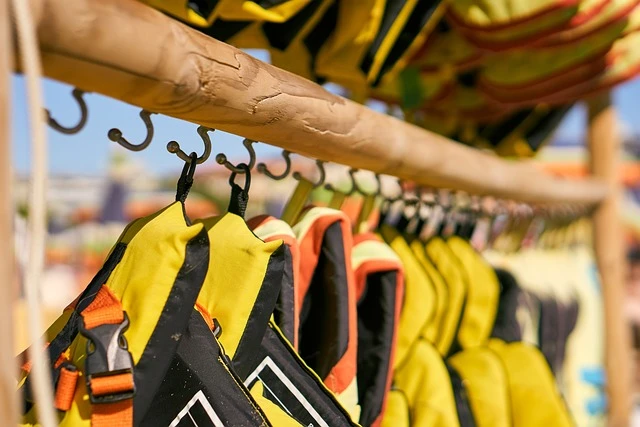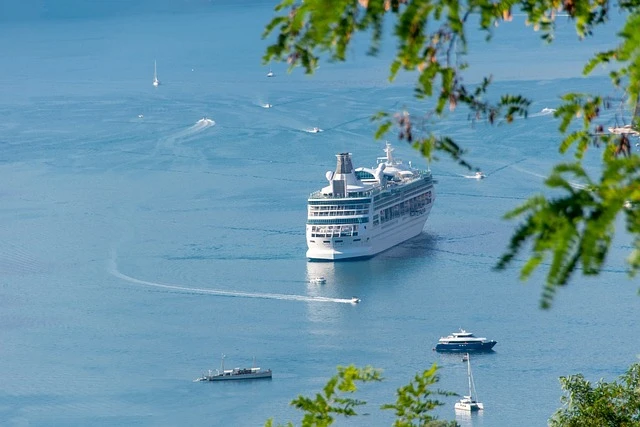Login
I Have Read And Agree To The
Login
I Have Read And Agree To The
Register
I Have Read And Agree To The
Change Password
Welcome to Yachttrading.com!

Congratulations on changing your password successfully!

Congratulations on changing your password successfully!
Life jackets play a crucial role in ensuring safety during boating and water sports. According to the California Division of Boating and Waterways, the vast majority of boating-related drowning incidents are due to the absence of life jackets. Today’s life jackets are not only brightly colored but also comfortable and convenient.
No matter how strong your swimming skills or how experienced you are in boating, the California Division of Boating and Waterways strongly recommends wearing a life jacket at all times during any boating activity. Accidents can happen unexpectedly, and once in the water, it becomes extremely difficult to put on a life jacket and stay afloat.
According to California law, children under the age of 13 must wear a life jacket at all times on any moving boat. There are three exceptions: if the child is strapped in with a safety harness on a sailboat, is in an enclosed cabin, or is aboard an emergency rescue vessel.

California law requires that only individuals aged 16 and older who hold a California Boater Card can legally operate boats with engines of 15 horsepower or more, including personal watercraft (PWC). However, there are exceptions:
Individuals aged 12 to 15 may operate boats with engines of 15 horsepower or more, including PWC, under the direct supervision of an adult aged 18 or older who holds a Boater Card.
For sailboats under 30 feet in length powered primarily by wind, or small boats used between moored vessels and the shore, there are no age restrictions.
Those under 16 may not operate boats with engines of 15 horsepower or more without adult supervision, where the adult is at least 18 years old and holds a Boater Card.
Safety patrols on waterways are carried out by the Coast Guard and local law enforcement agencies, whose job is to ensure your activities on the water are safe and enjoyable. Always cooperate with them and adhere to the relevant regulations.
All boat operators who are required to have a Boater Card must carry it with them and present it upon request by law enforcement. Failure to carry this documentation may result in fines.
For boats less than 16 feet in length, as well as canoes and kayaks, every person onboard must have a Coast Guard-approved life jacket. Additionally, anyone riding a personal watercraft or participating in towing activities must wear a life jacket. If life jackets are stored, they must be easily accessible, and passengers should be shown where they are located along with other safety equipment.
For boats 16 feet or longer, in addition to the above requirements, there must be an easily accessible Type IV throwable device, such as a life ring or cushion.
All boats must be equipped with sound-producing devices, such as a whistle. It is recommended that boats also carry a paddle, 20 feet of tow rope, and an anchor. Between sunset and sunrise, or in conditions of poor visibility, boats must have navigational lights on.
For motorized boats, mufflers that meet state noise standards must be installed, and an approved fire extinguisher must be carried. Non-motorized vessels such as canoes, kayaks, and stand-up paddleboards (SUPs) must have personal flotation devices. SUPs are considered vessels, and it’s recommended to use a leash to ensure the flotation device stays attached. SUPs are not advised for use in high-speed open waters or busy boating areas.
Any vessel with a sail longer than 8 feet or with an engine (regardless of size, including personal watercraft) must be registered with the DMV to be legally used in California waters. Additionally, boats used in freshwater must display the latest Quagga sticker, unless the vessel is exclusively for saltwater use.
On the waters of Lake Perris, all boats are limited to a maximum speed of 35 mph, with no directional restrictions in the 5 mph zones. These slow-speed areas are usually near the shore or at the eastern end of the lake, where the water is shallow and hidden obstacles exist.
When visibility is low, or between sunrise and sunset, the maximum boat speed is limited to 5 mph, and navigation lights must be on. Boats are prohibited from entering within 50 feet of designated swimming areas.
It is illegal to operate a boat while under the influence of alcohol, and violators may face arrest and possibly be taken to county jail. Alcoholic beverages may only be consumed on boats, and carrying alcohol to day-use areas is prohibited, although drinking is allowed in campgrounds.
Towing inflatable rafts is permitted on Lake Perris. When engaged in water skiing, towing, or similar activities, there must be a spotter aged 12 or older on board, holding an orange flag, and communicating with the boat operator. All towing activities are restricted to daylight hours.
Tags :
 Leave the comment
Leave the commentQuestion Type
Question Type
Question In Detail
Relevant Recommendation

18 October 2024
Alabama Boating and Water Traffic Rules and Regulations.
 617
617 0
0Type Of Feedback
Feedback
Contact Information
+244
This website uses technical cookies,which are necessary for you to browse it and which help us to provide the service.Withyour consent,we use profling cookies to ofer you an increasingly agreeable browsing experience,to faclitate interaction withour social-media features,and to enable you to receive marketing messages tailored to your browsing habits and interests Toaccept all profiling cookies,click ACCEPTto decline,click REFUSE.